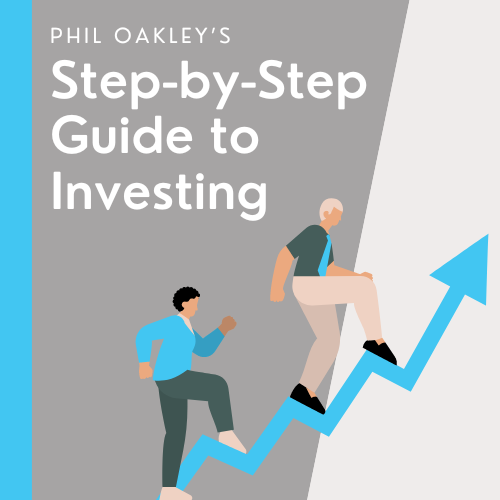
I’m often worried that whenever I mention the words “position sizing” you will groan and think “Not this again”.
But it truly is the most important factor in trading. Not the only important factor, of course. There are many.
Such as risk management, SOPs, trading psychology, strike rate, patterns…
However, no trader ever goes bust from trading small. At least, not that I’ve heard.
In fact, when you scale down when losing, it should be almost impossible.
Let’s say you risk 1% of a trade and lose 10 trades in a row.
You’re now 10% down.
Let’s say you reduce down to 0.75% of the original account.
Lose another 10 trades.
Now you’re down 17.5%.
Then you decide to scale down again and drop down to 0.5% of your initial account.
And let’s say this time you lose 20 trades in a row.
You’re still only down 27.5%.
I’m not saying that’s great.
But even after losing 40 trades in a row you still have the vast majority of your capital intact.
And whilst it’s certainly possible to lose 40 trades in a row, it’s very unlikely.
Roughly 0.000000000091% likely, if you were wondering.
That means there’s no excuse for blowing an account if you’re using proper position sizing.
You should never be running losses, and no trade should ever make or break you.
If it can, then you’re trading too large.
It doesn’t matter whether you’re trading as the house or as the player.
Trading as the House
Trading as the ‘house’ means you’ll often be trading with a systematic approach. Your goal is to take trades in order to allow your edge to play out.
Think of the roulette wheel at the casino. It has one green slot where everyone loses.
It’s not guaranteed to win, but the odds are stacked in its favour.
So how many times does the casino want to play?
As many times as possible!
This is why you won’t be allowed to place abnormal-sized bets that allow a chance for the casino to be down. But they’ll let you place that same amount through lots of mini-size bets and sometimes give you free food and drink in exchange for the pleasure of relieving you of your money.
When you trade as the house, you’re trading knowing that one trade is chance, 100 trades is an edge. You’re playing the edge as many times as possible and using position sizing to allow your edge in the market to play out.
The house is the casino. Structured, calculated, and playing the long game with a clear edge. If you want to be a consistently profitable trader, you need to think and operate like the house.
Because in the long run, the house doesn’t lose.
If you only trade breakouts in a bull market and you use sensible position sizing this won’t make you rich overnight. Nothing does. Or at least nothing I’ve found.
But this strategy is proven as it has been proven before me by people like Minervini, Weinstein, O’Neill, and Darvas before them… And probably someone before him too.
Trading as the Player
But that doesn’t mean you can’t profit as the ‘player’. There are two ways to operate in the game.
When you’re trading as the player, you’re making discretionary calls in the market based on your market knowledge and awareness, and assessment of risk versus reward. This is something that is earned through experience.
Pattern recognition in trading can be incredibly powerful – but even if you aren’t trading as the house and are now instead trading as a player you still need to use sensible risk management and position sizing.
Regardless of how you trade, you should never be putting yourself at risk.
Remember, most players lose. There’s a reason for this. Typical reasons include no strategy, no sensible position sizing or idea of risk management, no deep understanding of the market or of the securities they are trading…
And if you don’t have all of these – you should not even consider trading as the player.
But there is nothing wrong with trading as the player as long as you understand the risks.
The successful player is likely to generate excess returns because that is the goal (but keep in mind the unsuccessful player is likely to generate excess losses).
You are essentially taking an educated bet on a position based on the chart and fundamental factors.
Be careful when trading as the player.
Conclusion
The market, much like a casino, doesn’t care about emotions. It rewards discipline, probabilities, and risk management.
If you trade like the player, make sure this is only when you believe you have an edge. And as you’re tracking your trades, you’ll be able to see if trading as the player generates or takes away P&L.
If you trade like the house, you’ll develop the skills and mindset needed for consistent success.
And if you trade like the house, you’ll understand better how and when to trade as the player.
Your goal as a trader should be to think and act like the house: have a clear edge, manage risk, and play the long game.
Do that, and the market will work in your favour over time. And when you spot opportunities as a player, trade sensibly and within your risk tolerances.
Michael Taylor
Get Michael’s trade ideas: newsletter.buythebullmarket.com
Twitter: @shiftingshares
Got some thoughts on this week’s article from Michael? Share these in the SharePad chat. Login to SharePad – click on the chat icon in the top right – select or search for a specific share or the “Traders chat”
This article is for educational purposes only. It is not a recommendation to buy or sell shares or other investments. Do your own research before buying or selling any investment or seek professional financial advice.



